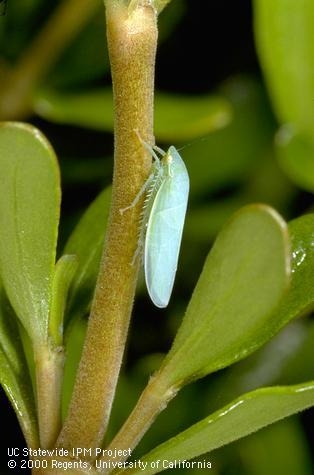You may see leafhoppers in your garden or landscape this time of year as they hop about feeding on a variety of plants. You can distinguish these small, wedge-shaped insects from other pests by their tendency to quickly jump or crawl rapidly sideways when disturbed.
Leafhoppers are sucking insects that insert their mouthparts into plants and suck out plant juices and cell contents. Damage occurs during feeding, which typically results in leaves looking stippled (little white dots), bleached, pale, or brown, and plant shoots may curl and die. You may notice a sticky residue on the plants called honeydew, a waste product from when some species of leafhoppers feed. A fungus called sooty mold may grow on the honeydew, which can be unsightly or messy.
The presence of leafhoppers on plants may not necessarily mean you need to take action. Many naturally occurring general predators ("natural enemies") may be feeding on them and might keep leafhopper numbers low enough that plant damage is minimal.
Read more about leafhoppers, their life cycle and damage, and see management tips on the UC IPM Leafhoppers web page.
Author - Associate Director for Urban & Community IPM/ Area Urban IPM Advisor
Attached Images:
